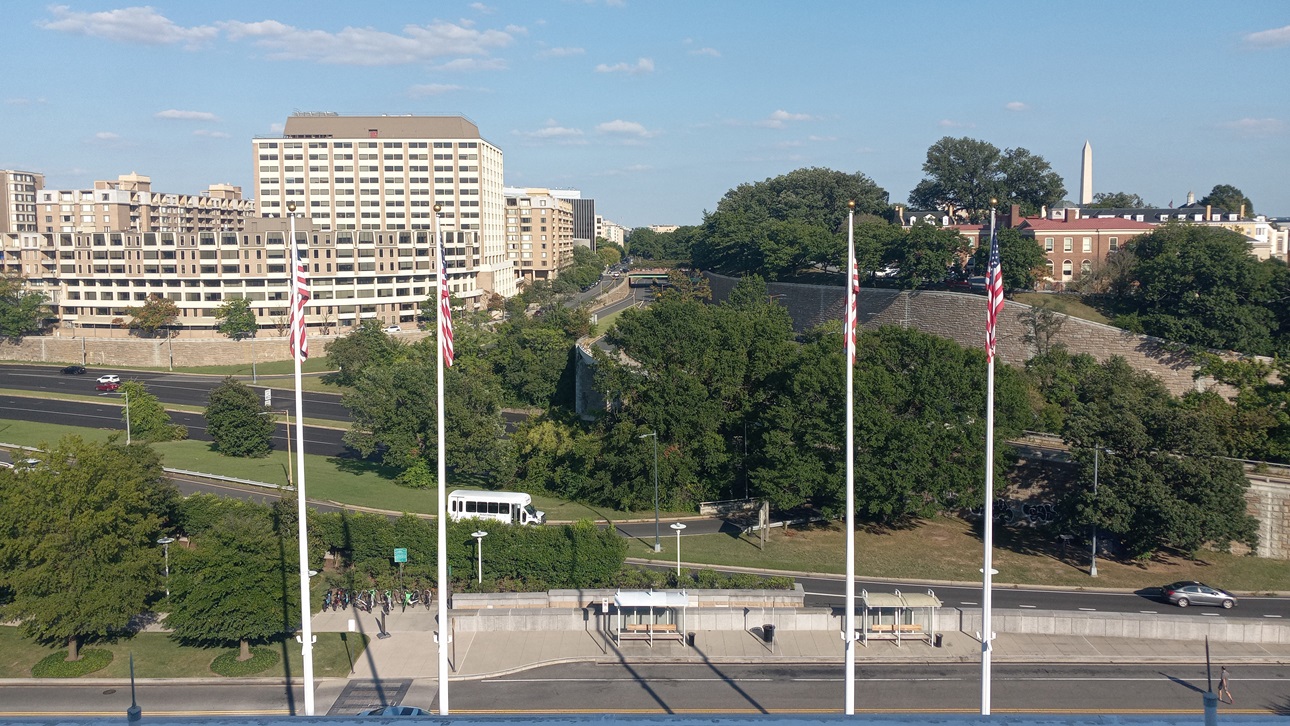- English
- 中文 (Chinese)
- Français (French)
- Deutsch (German)
- 日本語 (Japanese)
- Español (Spanish)
Kennedy Center Cultural District Land Use Action Plan

Opportunities for Investing in the Future of Foggy Bottom
The DC Office of Planning and the National Capital Planning Commission partnered to sponsor a 2-day Technical Assistance Panel with ULI Washington on the Kennedy Center and Foggy Bottom. The Panel examined the area covered by sprawling I-66 highway infrastructure between the National Mall, the Kennedy Center, and the Foggy Bottom neighborhood. To address the disruption in the area’s urban fabric and mobility network caused by the maze of ramps and tunnels, the panel was tasked with developing an action plan to restore the street grid, create infill development opportunities, and integrate the Kennedy Center into the city’s monumental core.
Many prior planning efforts had identified the different design and development approaches needed to provide appropriate connectivity to the different parts of the study area. The southern part of the site near the National Mall, the central part of the site stretching from the Kennedy Center eastward to E street, and the northern part of the site by Foggy Bottom all vary significantly in political context and abundance of opportunities for cultural impact, equitable development, and public and private stewardship. The panelists identified short-, medium-, and long-term action items to bring cultural vibrancy, meaning, and a sense of place to each of the three parts of the study area, as well as a framework for implementation of a new vision for the area from a perspective of governance.
Résumé du rapport : The DC Office of Planning and the National Capital Planning Commission partnered to sponsor a 2-day Technical Assistance Panel with ULI Washington on the Kennedy Center and Foggy Bottom. The Panel examined the area covered by sprawling I-66 highway infrastructure between the National Mall, the Kennedy Center, and the Foggy Bottom neighborhood. To address the disruption in the area’s urban fabric and mobility network caused by the maze of ramps and tunnels, the panel was tasked with developing an action plan to restore the street grid, create infill development opportunities, and integrate the Kennedy Center into the city’s monumental core.
Many prior planning efforts had identified the different design and development approaches needed to provide appropriate connectivity to the different parts of the study area. The southern part of the site near the National Mall, the central part of the site stretching from the Kennedy Center eastward to E street, and the northern part of the site by Foggy Bottom all vary significantly in political context and abundance of opportunities for cultural impact, equitable development, and public and private stewardship. The panelists identified short-, medium-, and long-term action items to bring cultural vibrancy, meaning, and a sense of place to each of the three parts of the study area, as well as a framework for implementation of a new vision for the area from a perspective of governance.


